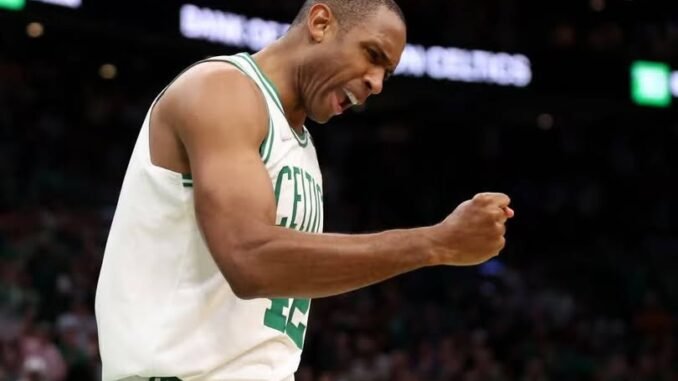
The Uncertain Farewell: Al Horford’s Impact and the Looming End of an Era for the Boston Celtics
The confetti from the 18th championship banner has barely settled in the rafters of the TD Garden, but the Boston Celtics are already facing a new, and deeply emotional, challenge. The narrative of an invincible, championship-winning team has quickly given way to the complicated realities of the NBA’s modern business. For the fanbase, this new era is personified by the potential departure of one of the most beloved and impactful players of the past decade: Al Horford. A free agent in the summer of 2025, the veteran big man, a champion and a mentor, stands at a pivotal crossroads, and the whispers of his potential exit have sent a chilling wave of anxiety through the hearts of the Big Green.
For five seasons across two separate stints, Horford has been the steady, beating heart of the Celtics. He arrived in Boston in 2016 as a highly-coveted free agent, a polished and versatile big man who brought a new level of professionalism and veteran savvy to a young, ascending team. His first departure in 2019 was a tough pill to swallow for fans, but his triumphant return in 2021 was a masterstroke by President of Basketball Operations Brad Stevens, a move that revitalized the team and provided the missing piece for their championship aspirations.
In his second stint, Horford transformed from a traditional post player into a perfect complement for the modern NBA. He evolved his game, developing into a deadly three-point shooter who provided critical spacing for the stars of the team, Jayson Tatum and Jaylen Brown. He was not just a player; he was a leader, a coach on the court, and a mentor to every young player who came through the locker room. His ability to read the game, to make the right pass, and to anchor the defense with his positioning and vocal leadership was invaluable. When Kristaps Porziņģis went down with an injury in the playoffs, it was Horford who stepped in and started 15 games, playing over 30 minutes at the age of 38, demonstrating an iron will and a commitment to winning that transcended his age. He was the wise old sage, the reliable veteran, and the glue that held the team together during its most critical moments.
Now, that glue is at risk of dissolving. Al Horford, a free agent at the age of 39, is at a stage in his career where his priorities are not just about a paycheck but about his legacy and his future. The Boston Celtics, facing the NBA’s crippling “second apron” luxury tax, have reportedly offered him only the veteran’s minimum, a stark reality of the league’s new economic structure. The new ownership group, led by private equity magnate Bill Chisholm, has made it clear that they are prioritizing financial flexibility, and even a beloved champion is not immune to the cold calculations of the new collective bargaining agreement.
This financial predicament has opened the door for other teams to lure Horford away. The Golden State Warriors, a rival that Horford helped defeat in the 2024 NBA Finals, have emerged as a strong suitor. The Warriors, with a championship core of their own in Stephen Curry and Draymond Green, see Horford as a perfect fit for their system—a big man who can space the floor, make plays, and provide veteran leadership to a team looking to extend its own championship window. The Warriors’ pursuit of Horford, while still pending the resolution of their own financial decisions, is a clear sign of the respect he commands around the league.
For Celtics fans, the idea of Horford in a Warriors uniform is a hard image to conjure. He is one of their own, a part of the fabric of this championship team, and a player who, in the hearts of many, is more than deserving of a comfortable retirement in Boston. But the reality is that the NBA is a business, and for players in their late 30s, the opportunity to sign a more lucrative deal and potentially contend for another title is a powerful motivator. The rumors of his potential departure have not just created a void in the roster, but in the collective psyche of the team’s fanbase.
The loss of Horford would be more than just a personnel change. It would be the end of an era. His presence in the locker room, his calming influence on the court, and his unique ability to connect with players from different generations are qualities that cannot be measured by a stat sheet. His potential departure, along with other recent moves to shed salary, signals that the Celtics are entering a transitional period, a “championship retooling” that will test the mettle of the entire organization.
As the Boston Celtics navigate this new, more complex landscape, the situation with Al Horford stands as a powerful symbol of the challenges ahead. His story is a reminder that in the NBA, even the most cherished bonds can be broken by the relentless pressure of business. Whether he chooses to retire, sign with the Warriors, or somehow find his way back to Boston, his legacy is secure. He is a champion, a leader, and a player who gave everything he had to the Boston Celtics. The only question that remains is how the team, and its fanbase, will cope with a future without him.
Leave a Reply